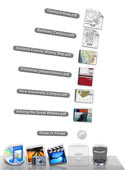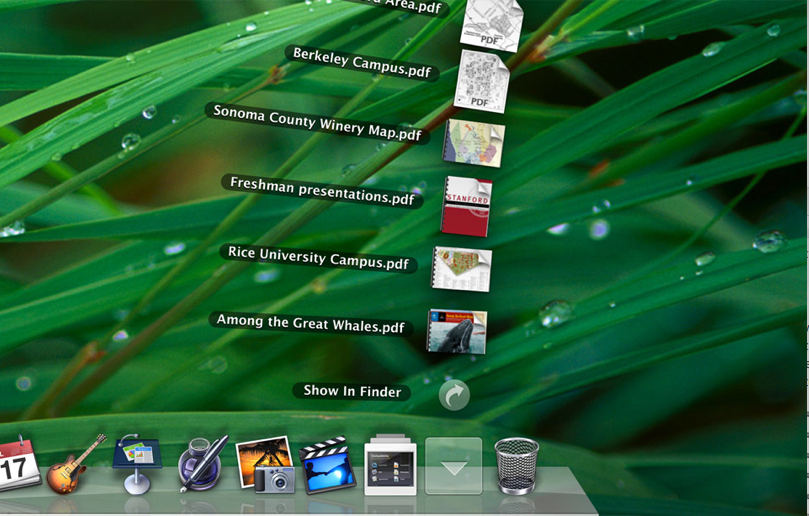For my senior professional ethics course, our first assignment was to write a short essay on a social, privacy, Internet or legal issue related to technology. I choose to write about social computing and would like to share my essay with you.
The Internet has brought the world the ability to instantly communicate with anyone, anywhere. Communication via the Internet has been the foundation for the global communications market and the driving factor behind the flat world concept. As the networks and applications become more and more web driven, powered, enriched and functional, human interaction has become the tight fiber that has been woven into an extremely complex fabric that has blanketed the world. Thus the spawn of email, listsrvs, message boards, search engines, instant messaging, productivity and collaboration tools, and in the most recent iteration social networking web applications. While these systems may seem unrelated, all share the same backbone: data.
Data is the new telephone. The new television. The new computer. Data is everywhere yet nowhere. Data is the reason technology continues to progress and will continue as long as thought is considered relevant. With data only continuing to grow and expand, interaction and analysis of that data will become more and more valuable. We see this in the world today as the jobs in the workforce slowly but surely change from labour based to information centric. And although the need for physical labour is still important in some industries, many once physical tasks can now be processed by highly efficient machine and robotic equipment. What was once the industrial revolution has turned into the information revolution.
Information brings meaning and function to data. As a byproduct of this definition, machines and devices have been created to help bring better meaning to seemingly useless or unusable data. For example, a speedometer in a vehicle uses the data gathered by rotation sensors on the axels to determine what the speed of the vehicle is and display that information to the user. As a more complex example, consider an in-vehicle GPS navigation system. The GPS system gathers data from multiple sources (satellites, compass, GIS data, time, maps, etc.) and combines that to deliver a relevant and useful information to the driver, i.e. driving directions. Information is the reason communication applications and platforms have evolved into their current iteration of social networking sites. As a paradigm, the Internet and associated technologies and networks have been restricted to virtual objects and environments. The virtually unlimited nature of this system is also what will drive the next shift in technology use.
As objects and elements in the real world become network capable (especially wirelessly), the way in which the real world interacts with technology will change dramatically. If the Internet revolution brought communication and data to every corner the world, the information revolution will fundamentally alter the way we interact and depend on that data. As an example, look at the Tricorder and communicator devices made famous by the television series Star Trek. The Tricoder device acted simply as an information analysis tool, gathering data and reporting it to the user in a handheld form and communicator as a simple yet functional mobile phone. While extremely ahead of their time, the evolution of technology has now reached the tip of that iceberg.
Portable communication devices have evolved from hand-held radios into cellular phones and most recently into handheld computing devices. Blackberries and iPhones are commonplace in today’s connected society and have allowed people to access virtual environments and information without being tied down to a physically connected machine. But the Internet paradigm has started to shift directions. The ease of use, standardization and compatibility of networking protocols and technology has created a virtual environment with nearly limitless addresses. At the same time, more and more real world objects are becoming Internet connected: refrigerators that can order more food based on expiration dates, microwaves that can fetch cooking instructions via the web, environmental control systems that can be remotely monitored and maintained, safety and security products, etc. With this ever expanding system of data, technology is beginning to adapt and adjust. All the previously listed examples could easily be remotely managed via a web browser interface, bridging the virtual and real worlds and over time can be expected to expand beyond just the home, office or localized environment.
The new concept of social computing is based on socially interacting with tangible real world objects/systems and is heavily dependent on the shift towards mobile communication technologies. Imagine at home, having the ability to control everything (lights, temperature, appliances, electronics, etc) from your mobile communication device (iPhone, Android based device, etc). Then as the user travels to work, location based data from the same communication device is feed to a community of other users and effectively produces relevant information (i.e. travel information, traffic congestion, etc) for the community as a whole. Upon arrival at the office, the user is granted access to secured facilities and systems based on authentication and verification of data gathered from the communication device and other connected sensors. For this reason, current social networks (i.e. Facebook, MySpace, etc.) would more adequately be called socially computing networks where peer based interaction is the driving force. Real world applications and implementations hold the more pertinent definition of social computing as these systems are less peer based and more information driven. Data is dead. Vive l’information.
Copyright 2008 Nicholas Gangadharan
All Rights Reserved.


